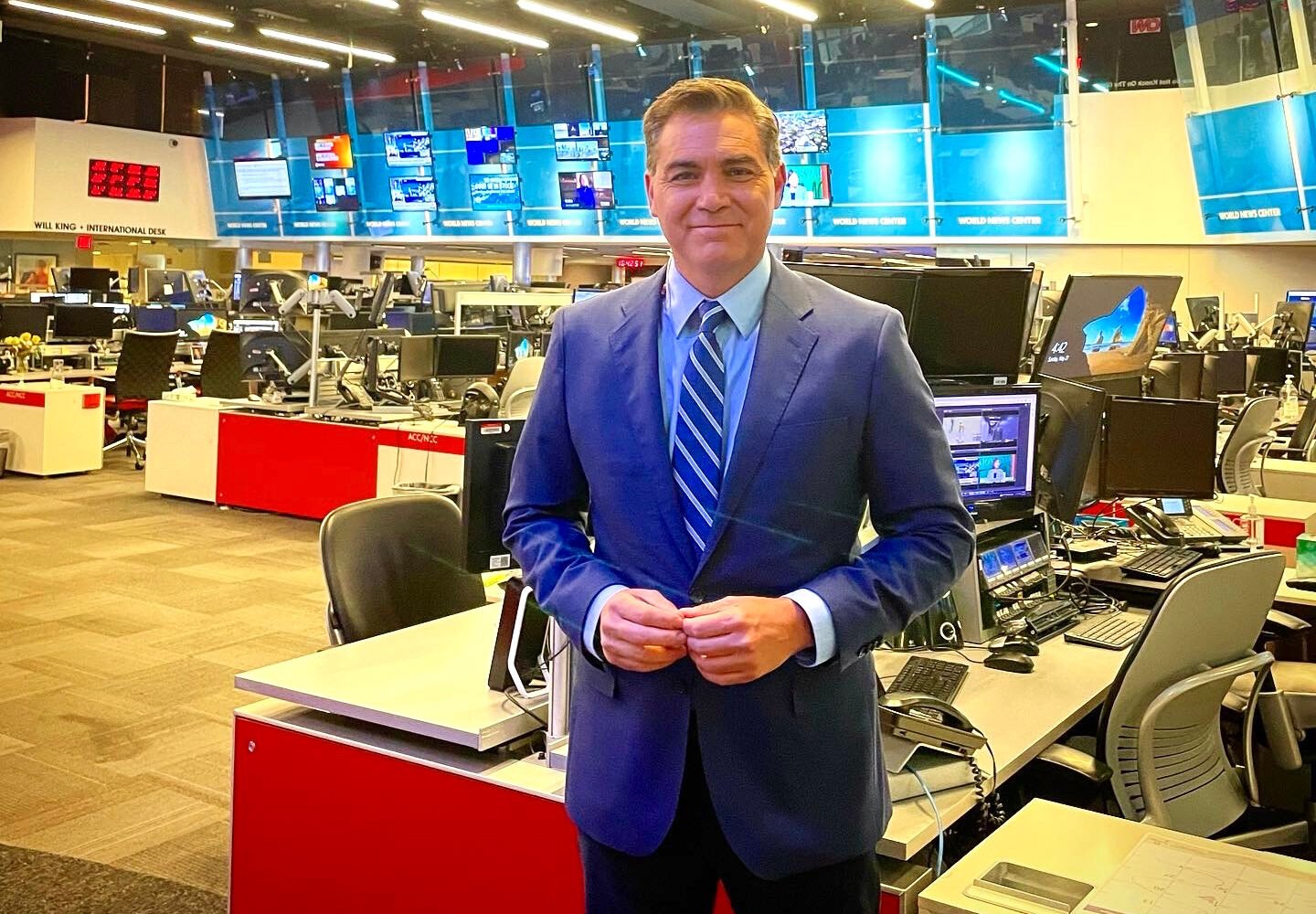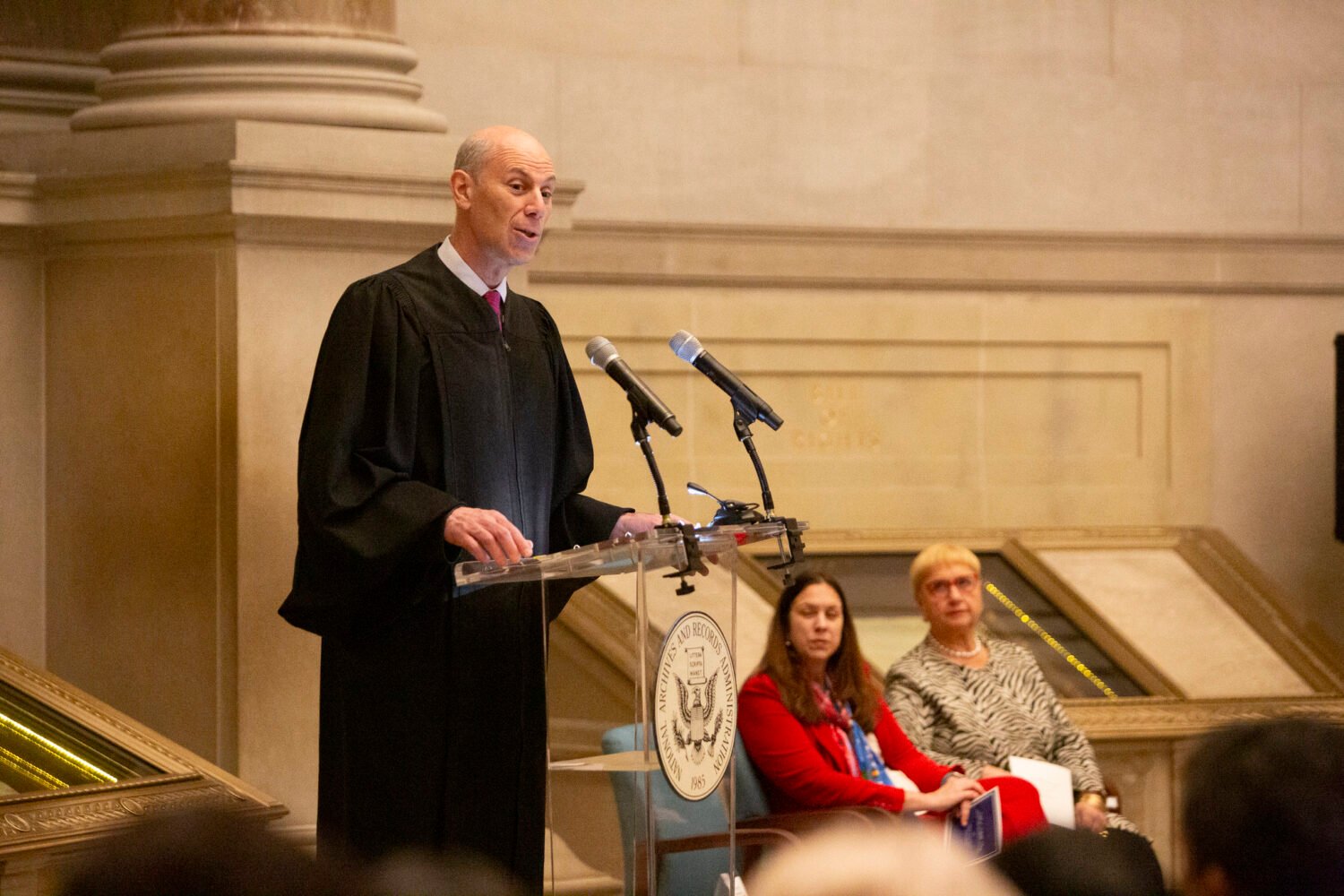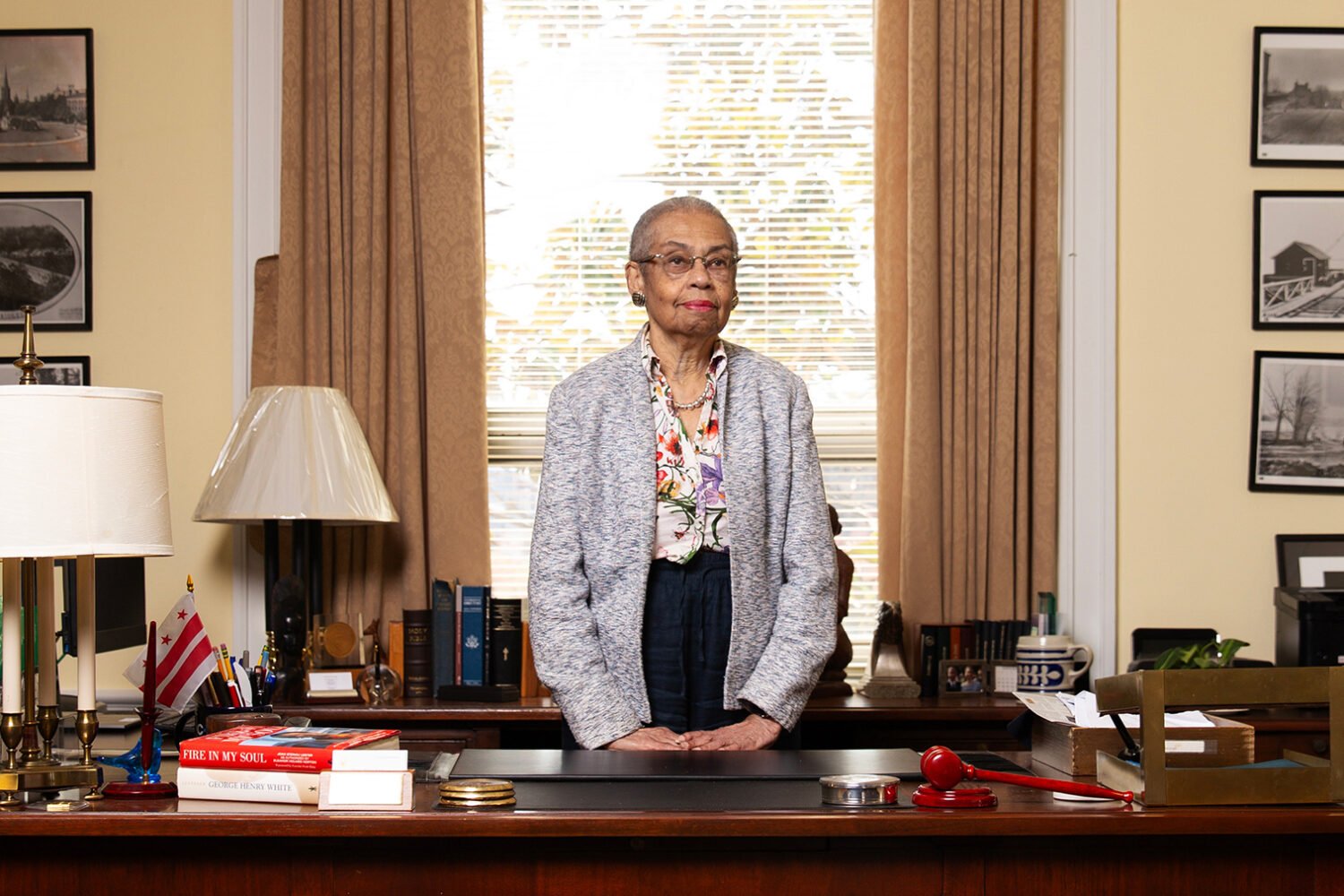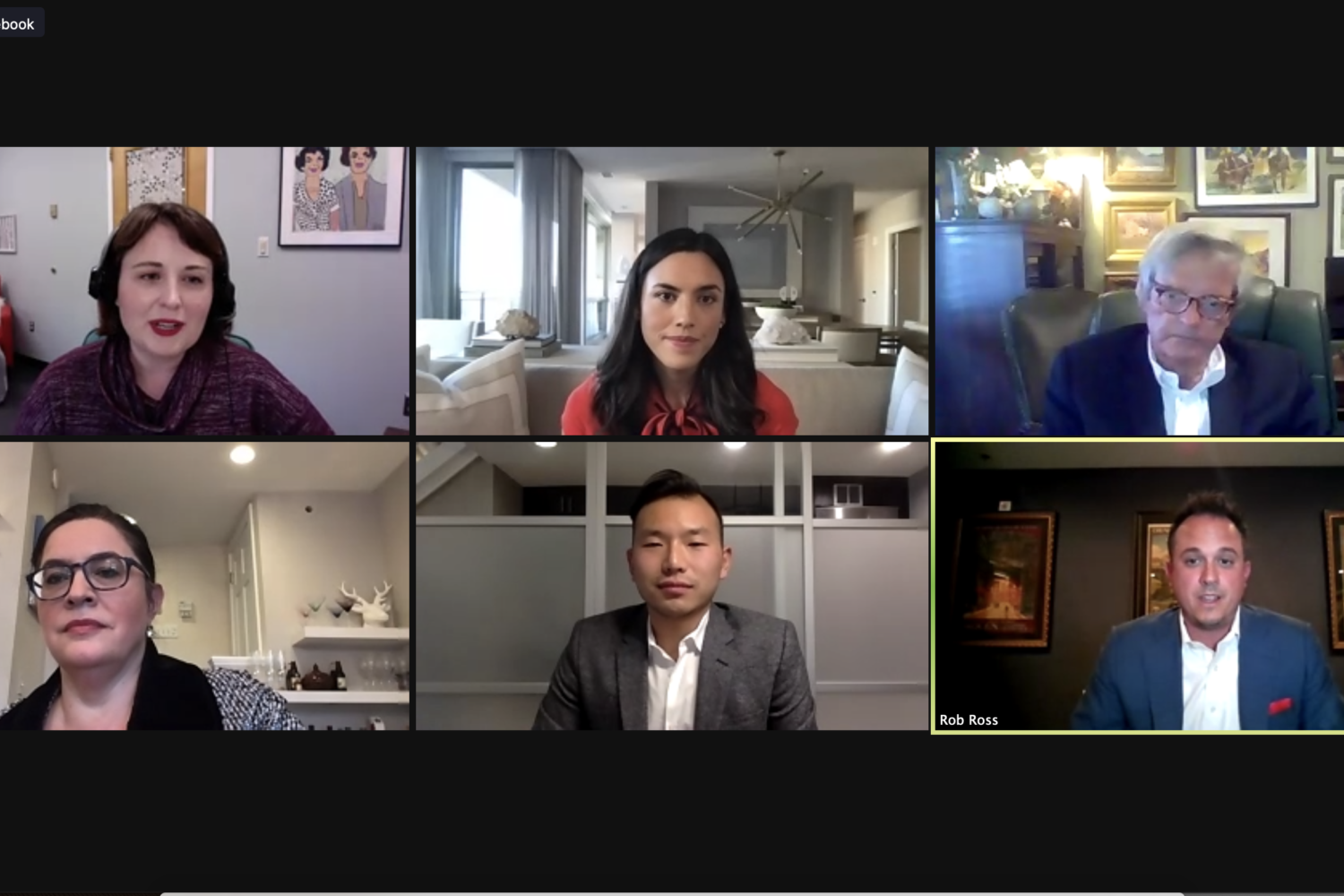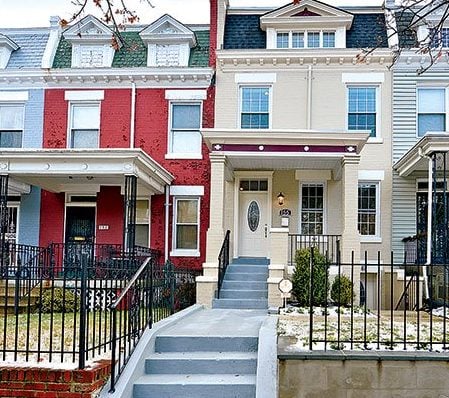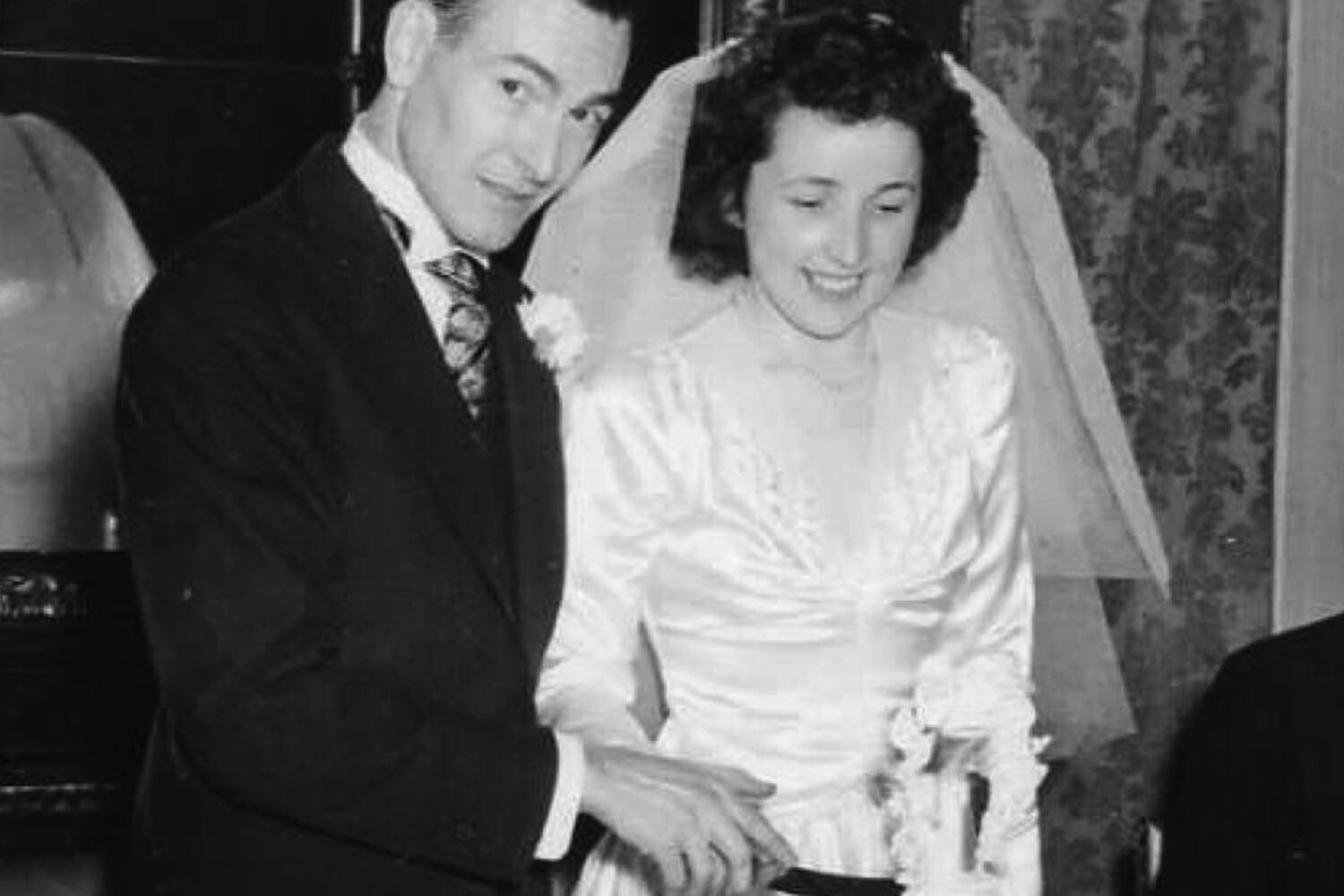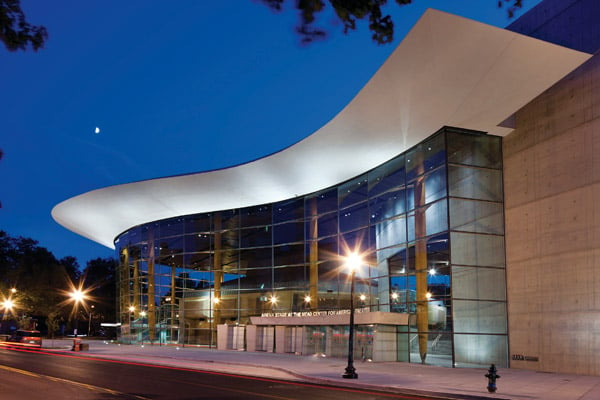In January 2004, American University president Benjamin Ladner and AU board chair George Collins took their wives to St. John in the Virgin Islands.
In their roles as president and board chair, Ladner and Collins had become friends. They dined together after board meetings, sailed together, vacationed together.
When Ladner and his wife, Nancy Bullard Ladner, were looking for a second home, Collins and his wife introduced them to Gibson Island, an enclave on the western shore of the Chesapeake Bay. Their wives, both with Southern roots, hit it off. Collins sponsored the Ladners for membership in the island’s tennis and golf club.
But by 2004 the mix of business and fun wasn’t always pleasant. Ladner was lobbying the board for a raise, and he couldn’t leave it in the boardroom. During the trip to St. John, Ladner kept talking about money.
At the time Ladner was making $880,750 a year, including base pay, bonus, and incentives. This put him among the nation’s best-paid college presidents. But he wanted more.
In a confidential memo to Collins, Ladner had made the case for a package of bonuses and investments that would have added $5 million on top of his base salary over the next five years. He would be making more than any college president in the nation.
“You’re not running a top-ten school,” Collins replied. “You don’t have a medical school. You’re not Harvard. You are not an investment banker, and you are very well paid.”
Ladner was beginning to disappoint Collins in other ways. Collins had pressed him for accurate measurements of student performance and how AU compared to other institutions. He found Ladner’s numbers “sloppy.”
On the St. John trip, Collins told Ladner that his proposed financial package was unlikely to be approved. And Collins thought to himself: We had better start looking for a new president.
Later, to a few fellow board members, he said: “Time to hire our own lawyer.”
A year and half later, the downfall of Benjamin Ladner unfolded in public view. Leaks of his expenses cast him as a profligate spender of college funds for personal use. Students pilloried him on the Internet and protested on campus. Deans and faculty issued votes of no confidence.
“His moral compass has lost its bearings,” Paul Martin Wolff wrote to other trustees.
The AU board, split into camps, suspended Ladner in August 2005. By October he was out on the street.
In many ways, the previous 11 years were exceptional for American University. The campus at DC’s Ward Circle, where Massachusetts Avenue meets Nebraska Avenue, had undergone major renovations. Applications had risen during Ladner’s tenure from 4,829 to 13,560, and freshmen entered with higher test scores. The endowment had bloomed from $29 million to $281 million. The schools of law and international service were considered first-rate. The Cyrus and Myrtle Katzen Arts Center, the campus’s new crown jewel, was about to be dedicated.
Some of the credit had to go to Ladner.
“To dismiss his years as illusion is bullshit,” says Cornelius “Neil” Kerwin, who served as provost for seven years and took over as interim president. “It’s dead wrong.”
But they were also years of living lavishly for Ben and Nancy Ladner. An anonymous letter to the board in March 2005 accused the couple of “severe expense account violations”—of blowing the university’s cash on a French chef, on weekends abroad, on extravagant parties for friends and family. The board investigated and corroborated the charges.
Ladner felt blindsided and abused. He left unapologetic and unrepentant.
The demise of Ben Ladner is still reverberating through the board and the campus. Students want changes to the board. A Senate committee, investigating abuses among nonprofit corporations, is examining financial transactions by Ladner and the AU trustees. Federal prosecutors are investigating, too.
What brought Ben Ladner down? The anonymous letter? A campus rebellion? Weak oversight? A power play by the board?
Or was Ben Ladner the author of his own undoing, a man who lost his ethical center and, when confronted, attacked even his friends?
Many American University students and faculty first saw Benjamin Ladner on November 4, 1994, when he delivered his inaugural address. He spoke of AU’s “unique identity” and its “American destiny.”
Founded in 1893 with ties to the Methodist Church, American University was unusual: It is one of the few universities chartered by Congress. It developed over the next century as a private, coeducational college that ranked in the middle range of universities. Against DC’s major colleges, Georgetown and George Washington, it ranked a distant third in 1994.
American University’s destiny, Ladner thundered, “is now clouded by a remarkable crisis, which may well be the most alarming dilemma of our time: namely, the extent to which the self-set goals of private individuals are unrelated to the expanding needs of the public domain.
“Institutions,” he said, “are increasingly regarded solely as a functional means for attaining private ends. . . .”
Ladner’s rousing speech in the school’s gymnasium brought the crowd to its feet, according to the Washington Post.
Ladner was 52. A tall, heavyset native of Mobile, Alabama, he delivered his speech with a mellifluous voice that was part Southern preacher and part professor of philosophy. He had studied both religion and philosophy in college and graduate school.
People described Ladner as “charming,” “intelligent,” “personable,” “visionary.”
Growing up in Mobile, the youngest of three children, he played ball, rode horses, studied cello. He went to Baylor University on a basketball scholarship in 1959, according to a feature in American University’s alumni magazine, but was injured in his freshman year and left the team. He graduated with a degree in English and religion, then earned a divinity degree from Southern Seminary and a 1971 doctorate from Duke in philosophy and religion.
In the 1970s Ladner taught at the University of North Carolina’s Greensboro campus; in 1980, he became director and then president of a nonprofit teacher-training organization, the National Faculty of Humanities, Arts, and Sciences. Based in Atlanta, it was funded by grants from government and corporations.
When AU came calling in 1994, Ladner had never held a major administrative or management job at a university. But AU was desperate for stable leadership.
Four years earlier Richard Berendzen, who dreamed of AU becoming “Harvard on the Potomac,” was forced to resign the presidency after being charged with making obscene phone calls from his office. He would plead guilty. Provost Milton Greenberg took over.
AU then hired Joseph Duffey from the University of Massachusetts; he served less than two years before leaving to head the US Information Agency. Elliott Milstein, a popular dean of the law school, became interim president. The board then offered the presidency to Scott Cowen, a dean at Case Western Reserve University, but he turned down the job at the last minute.
Ben Ladner was not even under consideration when John Petty, who had met Ladner in 1978, gave his name to a headhunter. “I threw his hat in the ring,” says Petty, a banker who later joined the AU board. “I knew he was a big-league guy. It was time to go from the minors to the majors.”
At his inauguration in November 1994, Ladner came off as a heavy hitter with high ethical standards. He talked of bridging “the traditional gap between private interest and public responsibilities.”
One of his first acts was to see to his private interest.
As soon as the Ladners came to Washington, they toured the house that had been the AU president’s residence since 1968. The sprawling house with swimming pool at 3300 Nebraska Avenue sits on a large corner lot across from the campus.
Presidents over the years had welcomed students and faculty into the glass-walled room along the rear. Students could walk from Fletcher Gate on the campus’s west end, cross a small street, and ascend the steps to the gathering space.
“We held many meetings there,” says Elliott Milstein, now a professor at AU’s Washington College of Law. “It was a big asset. The job of the president is to bring people together.”
But the house did not meet the Ladners’expectations. “Inadequate,” was the word AU officials recall their using. The Ladners went house-hunting in nearby Spring Valley, one of DC’s most expensive neighborhoods. They chose a new stone mansion around the corner from AU at 4835 Glenbrook Road. Perched on a hillside, it has white pillars flanking its entrance and elaborate stone walls. The Korean ambassador’s residence is two houses down.
As it happened, American University had once owned the lot and sold it to a developer. To suit the Ladners, the university sold the former president’s residence on Nebraska Avenue for $1.325 million and bought back the land and house on Glenbrook for $1.45 million. AU officials said it made more sense to buy a new house than to refurbish the old one.
Over the next two years the university paid for an estimated $200,000 in renovations and improvements ordered by the Ladners. They called in landscape designers to create a waterfall and pond behind the patio at a cost of about $30,000.
The Ladners outfitted the house with expensive china and stemware to host elegant affairs for donors and dignitaries. Board members were entertained with fine wine in Waterford Curraghmore crystal, $100 a glass. Waiters wore tuxedos.
But in moving a few blocks from campus and creating lavish living quarters, the Ladners separated themselves from students and faculty. Past presidents had hosted as many as eight events a week; the Ladners opened their home perhaps a dozen times a year for university events.
To students and faculty, the house became a metaphor for Ladner’s reign. Says a dean who had been at AU for decades: “The extravagance started from day one. It was an imperial lifestyle.”
The responsibility for overseeing President Ladner belonged to the American University board of trustees.
The board that hired Ladner in 1994 was packed with names from local real estate like Edward Carr, Stuart Bernstein, and Gary Abramson and with such heavy hitters as prosecutor Kenneth Starr and General Motors executive Thomas Gottschalk.
With 24 members, it was a relatively large group; it met just three times a year. A board member who joined in 1999 called it “a cocktail board.”
The board negotiated Ladner’s first contract in standard fashion. It set his salary at $225,000, an increase of $30,000 over the amount paid his predecessor. It provided him a car and driver to assist him “in carrying out his duties as president.” It allowed for travel and entertainment expenses “reasonably incurred by Ladner in the performance of his duties.” The contract had a three-year term.
In 1997 William Jacobs—an athlete as an AU student, then an executive with MasterCard in New York—took over as board chair. One of his first acts was to sign a new contract with Ladner.
That contract set Ladner’s salary at $295,000. It added an annual “split dollar” life-insurance-premium payment, beginning at $184,000—$109,000 thereafter—to be invested toward his retirement, at which time Ladner would receive the capital gain, and the principal would revert to the university. This was in addition to a standard life-insurance policy the university paid for. It was essentially a cash payment to an investment account, which brought his annual compensation to $404,000.
The contract went far beyond cash.
It called for “full use” of a car and driver. The university would house the Ladners and pay for “housekeeping services and residence staff.” It allowed first-class travel. It made Ladner a tenured faculty member at the rank of professor in the Department of Philosophy and Religion. If the college let him go for any reason other than cause, it would pay him two years’ salary.
Referring to Nancy Ladner as the university’s “First Lady,” the contract allowed her a car with a phone—but no driver. It called for payment of “expenses related to her role in conducting University business.”
The 1997 contract was open-ended. It had no termination date, a standard clause in most employment contracts. It was signed only by Ladner and Jacobs.
Jacobs never took the contract to the board, according to members at the time. There is no mention of it in board minutes. No member remembers seeing it.
Says A.W. “Pete” Smith Jr., who joined the board in 1999: “It allowed them to live an expenseless life.”
The 1997 contract said AU would provide a driver for Ben Ladner, but the Ladners had greater needs. They advertised for a “chauffeur/butler,” according to a faculty member.
By most accounts, the Ladners had not lived an extravagant life in Georgia. They had sent their children mainly to public schools. They lived in a modest home northeast of Atlanta.
The Ladners were devoted to each other. They’d been high-school sweethearts in Mobile but went their separate ways in college. Each married and divorced. They married each other in 1982, according to AU’s alumni magazine.
In his first year as president, Ladner worked to improve what he called a university that was “less than the sum of its parts.”
In a 1996 memorandum to the board, he added up his accomplishments, which included reorganizing the senior staff, changing the budget process, and attending social, political, and financial meetings. On campus, he said, he attended “every kind of meeting imaginable.”
Although he portrayed himself as active on campus in his 1996 performance review, students say he gradually withdrew. They joked about “Ladner sightings.” They knew he was on campus only if his car, with driver, was idling in front of the president’s building.
Before Ladner took office, students could walk into the white clapboard president’s building. Ladner ordered the door locked and a camera installed so an aide could buzz students in.
Previous presidents had worked out of an upstairs office; Ladner moved downstairs to the large, ceremonial office, which he had redecorated.
Ladner had a necklace of medallions made for him to wear at graduation and other ceremonies. It bore a shield for each of AU’s eight schools.
Nancy Ladner took her “first lady” title to heart. Her name tag at campus events identified her as First Lady.
In the Ladners’ home and office, staff members lived in fear of the president’s temper. They would have meetings to decide how to approach him about such matters as putting blinds on windows.
“We didn’t want him to become irate over one thing or another,” says Katya Thomas, Nancy Ladner’s personal assistant in the fall of 1998 and into 1999.
Thomas, a native of Michigan, was on leave from the Foreign Service. Her diplomat husband was out of the country. She thought the AU job would be interesting for a while. Her salary was $45,000.
“She had had younger people in the job,” Thomas told me from Kinshasa, where she’s now stationed in the US Embassy. “She liked me because I was a diplomat’s wife. She took pride in her social circle that included some ambassadors.
“She liked to say that she frequently has rulers at her table,” Thomas says.
Dinner was always treated as a special event, Thomas says—even if there were no guests. Nancy Ladner would dress for the meal every night. Good food and the right chef were status symbols for her. There was talk that the Ladners tried to hire away one of Dan Snyder’s chefs but failed.
The Ladners were strict about housekeeping, sources say. The kitchen had to be scrubbed down every night. Sheets and towels were ironed.
Several of the Ladners’ four grown children came to the president’s house for the holidays in 1998. According to Thomas, they brought their dirty laundry in suitcases. The Ladners’ Filipino housekeeper had asked to have some vacation during the holidays.
“She came crying to me,” Thomas says. The Ladners had ordered her to work on Christmas Eve until all the clothes were washed and ironed. “She said, ‘I can’t do this anymore.’ ”
Thomas says she talked the housekeeper out of quitting, but a few weeks into January, Thomas left herself.
What forced her out was not Ben Ladner’s screaming at her that some packages of toilet paper stored in the garage might cause the “First Lady” to get dust on her fur coat, nor calls at 5 am from Mrs. Ladner about spaghetti strands left in the sink.
“She called me on New Year’s Day and demanded to know what had happened to a certain bottle of Champagne,” Thomas recalls. “The implication was I had taken it. I had to quit.”
Under chair Bill Jacobs, AU’s board rewarded Ben Ladner handsomely. Jacobs joked to other board members that he and Ladner figured his annual compensation “on the back of an envelope.”
In fact, the board’s compensation committee adjusted his salary and benefits annually, according to records obtained by The Washingtonian. Ladner’s base salary had started at $225,000 in 1994 and was increased to $295,000 in 1997, then to $325,000 in 1998.
Ladner’s big break came in 1999.
Jacobs sent a confidential letter to AU finance chief Don Myers authorizing him to pay Ladner $365,000 in base salary, $148,000 in the annual contribution to his life-insurance policy, $100,000 incentive compensation (“paid to him immediately”), $91,250 in deferred incentive, and a past-due accumulated payment of $47,362. On top of those payments, Jacobs told Myers to establish a “deferred-compensation retention program” with $400,000 that Ladner could collect after five years.
The total topped $1 million, counting the $400,000 that would be waiting for Ladner in 2004.
The board gave Ladner another raise in 2000: $410,000 base; $145,000 bonus; $102,500 deferred compensation; $109,000 split-dollar contribution to his life-insurance policy. Total: $766,500. In 2001 Ladner’s compensation package totaled $846,500.
Though American University was a midsize campus—with 11,000 students, including a law school and a few graduate programs—it was paying its president Ivy League wages. Richard C. Levin, president of Yale University, made $600,000 in 2003.
George Collins replaced Bill Jacobs as board chair in 2001. Collins had retired from the top job at T. Rowe Price, sailed around the world, and at Ladner’s urging agreed to run the AU board.
Leslie Bains became vice chair, again with Ladner’s backing. An AU graduate who had become one of the leading women in the private-banking business, she had put in many years with HSBC North America and Chase. When Ladner came to court her for a spot on the board in 1994, she was responsible for $25 billion in assets for Republic National Bank.
“He seemed to have a plan for leadership,” says Bains. “He was charming.”
Bains was not charmed by Bill Jacobs, whom she found controlling. “His way or the highway,” she says. She was also disappointed at the AU board’s lack of interaction with students and faculty, who made cameo appearances at some board meetings. She suggested to Ladner that the board have dinner meetings with students.
“I don’t think it would work,” he said.
In remaking the board, Ladner also brought on Paul Martin Wolff, a top litigator with Williams & Connolly.
Collins, Bains, and Wolff became friends with Ladner. They socialized and did favors for one another. Wolff chose Ladner to speak at an award ceremony for him. Bains asked him to give a speech at a New York event for bankers after the September 11 attacks. “He was terrific,” she says.
But Collins, Bains, and Wolff came to board meetings with high expectations for accountability. Collins, a graduate of Virginia Military Institute, had served as a squadron commander in the Air Force and gotten his MBA at American. He joined the AU board in 1986 and had been on hand for the Berendzen debacle, during which his advice to the chair was “Shoot him on the spot”—fire him for cause, no parachute.
A sailor, a self-made man, and an athlete in his mid-sixties, Collins didn’t have time for frills. When he heard people refer to Nancy Ladner as First Lady, he said, “As far as I know, there’s only one First Lady, and she serves in the White House. We have to strip that from our vocabulary.”
B en Ladner devoted lots of time to international projects, in particular one with the American University of Sharjah in the United Arab Emirates. He landed a multimillion-dollar contract for AU to help manage the university. He and his wife visited the Persian Gulf nation once or twice a year. He got a seat on the Sharjah board for Leslie Bains.
The three stopped in London on the way back from Sharjah in February 2004.
“How long are you staying in London?” Nancy Ladner asked Bains.
Bains was leaving the next morning so she could attend meetings in New York.
“Too bad,” Nancy Ladner said. “We’re spending a few days. Can we give you a lift to the hotel?”
Bains accepted, but she was surprised to see a limousine waiting for them at Heathrow. She was more surprised to see the Ladners embrace the chauffeur when he got out to open her door.
“You seem to know him so well,” Bains said.
“We always use him,” Mrs. Ladner answered.
Back in New York, Bains related the story to her husband. They agreed it was a bit “weird,” but she thought: “If they want to spend their money that way, fine.”
The Ladners stayed in London two days and three nights. The hotel cost $2,352; food and other expenses, including a car and driver, were $2,513. The bills went to American University. Bains paid her own way and assumed the Ladners had as well.
On another trip, the Ladners and Bains stopped off in Rome. They ran into one another at one of Rome’s finest restaurants, near the Spanish Steps. Again, Bains assumed the Ladners were treating themselves. In fact, they billed AU $1,285 for meals during a two-night stay in Italy.
Board member Paul Wolff recalls inviting the Ladners to his home on Reservoir Road for an informal dinner. He and his wife noticed that a car delivered the couple and waited to drive them home.
Bains, Wolff, and others say they repeatedly asked John Petty, then chair of the board’s audit committee, about Ladner’s expenses. Petty brushed them off by saying it was an insignificant sum, perhaps $8,000 a year.
When I asked Petty about these exchanges, he said: “All expenses were signed off by the university’s finance department. If I blew anyone off, it was their duty to demand more detail.”
Under Petty, the board’s audit committee never examined Ladner’s expenses.
As Ben Ladner approached the end of his first decade as president, he believed he deserved more money—much more.
Ladner presented his case to the board with a list of 33 accomplishments. He had launched a $200-million capital campaign, obtained new academic accreditations, led international delegations. The budget had grown from $180 million to $330 million; 70 percent of campus buildings had been or were being rebuilt or renovated.
The board was generally pleased with Ladner; with the memory of Richard Berendzen’s scandalous departure still in mind, they were motivated to keep him happy.
But some board members were becoming uncomfortable. Salaries of university presidents are reported to the Internal Revenue Service on Form 990 each year, and the Chronicle of Higher Education publishes a list of the top ten. By 2002 Ladner had begun making the list.
For 2003, the board raised Ladner’s base pay only 3 percent and did not increase his merit bonus. Ladner took offense.
On February 19, 2004, Ladner faxed from his study a memo marked confidential to board chair George Collins. He complained about the small raises. “Furthermore,” he wrote, “I am now falling behind the salary levels of president’s [sic] at peer competitive schools.”
Ladner suggested ways the board could sweeten the deal: It could establish a new “retention incentive” of $225,000 a year to reward him for committing to another five years. In addition to that he asked for three cash bonuses of $200,000 each over the five years. He asked the board to increase his annual deferred compensation 10 percent, together with “a much larger percentage increase in my annual base salary.”
Collins did not circulate the memo in part because he thought it so outlandish that it would embarrass Ladner. The request was dead on arrival. Collins dubbed it the D.O.A. memo.
George Collins asked board member Pete Smith to join the compensation committee and study Ladner’s pay.
Smith, a Boston native, had worked for 30 years with Watson Wyatt, one of the world’s top consultants on executive compensation. He retired in 1999 as CEO. Paul Wolff had asked him to join the AU board.
When he did, Smith took it upon himself to tour the campus and visit with Ladner’s Cabinet, key faculty members, and students. He found that people had the impression that Ladner was living large, that he was detached. He reported to Ladner. “You need to be seen and touched,” Smith told him. “People complain about the car always idling by the president’s office building. Why don’t you ditch the chauffeur? When I needed a car and driver, I used to rent one.”
“You don’t understand the needs of a college president,” Ladner said.
“I used to be CEO of an $800-million company,” Smith responded.
“I can’t be the only one showing up at an embassy event without my own chauffeur,” Ladner said.
In late 2003, Smith began looking into Ladner’s compensation. Financial scandals concerning executive compensation had tarnished the image of high-profile charities and other nonprofits such as the United Way and Adelphi University. The federal government had passed legislation penalizing board members of nonprofit institutions, such as colleges, for overpaying their executives.
Smith engaged a new set of compensation consultants to review Ladner’s salary package and compare it with those at other institutions. The goal was to get a “comfort letter” from the consultants that would satisfy the IRS.
Ladner was skeptical of the process, according to board members and his memos. Then his strongest champion, Bill Jacobs, left the board. George Collins took his spot on the compensation committee.
The new consultants discovered that Ladner had been including only his base salary and his annual bonus in comparing his total compensation with that of other university presidents. He had never included the deferred-incentive part of the package. The swing was more than $100,000 a year.
“Adding that blew his compensation off the charts,” says Pete Smith. “He was one of the highest-paid university presidents in the country. It was unacceptable.”
Rather than getting a raise, Ladner was told the compensation committee would recommend a cut in his pay. But the committee wanted to soften the blow: It suggested that he join outside boards that paid.
Ladner was angry. Committee members said he was rude to anyone who disagreed with him.
“He would blow himself up like a balloon and get red in the face,” recalls Leslie Bains. “We saw a whole different side of him.”
He threatened to quit; he searched for allies on the board. He started to wage war.
The one who quit was Pete Smith. In a letter to Collins and Bains, he wrote, “It began to feel like the board reported to Ben rather than the reverse. It was then that I decided to resign as Trustee.”
On New Year’s Eve 2004, the Ladners treated their son Dean to an engagement dinner at their residence. It was an intimate affair for Dean and his fiancée, Nicole.
The 13-course meal, served by waiters, began with white truffle and porcini egg custard and American sturgeon caviar, served in eggshell.
After purple and neon-green cauliflower soup sake-style, littleneck clams, oysters, and crabmeat, the chef prepared a lobster tasting: lobster bourbon bisque, lobster claw, and lobster tail.
The meal was prepared by Rodney Scruggs, the Ladners’ chef. Under the 1997 contract, the university agreed to pay for dining staff at his residence. The Ladners hired Scruggs in 1999 for $52,035; when he cooked the engagement dinner, his salary was $88,000.
Scruggs stocked the family kitchen, bought the wine, scrubbed the counters. When Ladner arrived home after work, Scruggs dimmed the lights and made sure there was soft music playing. He greeted the couple with hors d’oeuvres. He served two- to four-course meals every night, whether there were guests or not. The Ladners did not eat leftovers.
When the Ladners drove to their Gibson Island home for the weekend, Scruggs would pack meals with instructions on how to prepare them. At times, he would go to cook for them.
As a reward, the Ladners sent Scruggs to France to be “rejuvenated as a chef.” He put all of his skills into that New Year’s dinner.
The main courses were Alaskan black cod and salmon, then Muscovy duck breast, then roasted rack of Colorado lamb.
Dessert was Death by Chocolate.
The price tag, including $111.40 for flowers, $307.96 for Champagne and wine, and $595 for waiters, totaled $1,381.95.
The Ladners expensed it to American University.
On February 25, 2005, the AU board held its scheduled meeting, facing the unpleasant task of cutting Ladner’s pay.
Collins opened the session at 9:35 am. He introduced Bishop John Schol, a new trustee who represented the Methodist Church. He also introduced Jim Joseph, an Arnold & Porter attorney Collins had hired to oversee the compensation review and serve as the board’s outside legal counsel.
At 11:30 Collins called the board into executive session. It lasted three hours. Some board members questioned why they needed Joseph, but Collins defended his choice and said he would resign if the outside counsel were not accepted.
Joseph proceeded to explain why he deemed Ladner’s compensation package out of proportion. He gave a detailed explanation of the IRS sanction rules. He presented the compensation committee’s proposal to cut Ladner’s pay, which would bring it in line with current standards.
Ladner asked Collins to send Joseph out of the room. Then Ladner recited his accomplishments, talked about his philosophy of education, and said, “This is not about money.”
To which Gary Cohn, a trustee who worked for Goldman Sachs, replied: “I have sat through many, many compensation presentations, and every time someone says it’s not about money—it is always about money.”
When Ladner finished his appeal, the board asked him to leave and brought Joseph back into the room. For an hour they argued the points of federal law and tax regulations.
David Carmen came to Ladner’s defense, according to board members in the room. Carmen, a lobbyist, scoffed at the IRS regulations and called potential financial penalties “de minimus.” He said that rewarding Ladner was much more important. He was joined in that sentiment by board member Pamela Deese, a lawyer.
Collins adjourned the meeting without a vote but scheduled one by phone in April, when the board voted 11 to 5 to reduce Ladner’s compensation. Carmen and Deese were among the five dissenters.
John Petty, the trustee who had recommended Ladner years before, abstained.
David Carmen’s role as Ladner’s chief advocate struck some board members as odd. Before the February board meeting, Ladner had approached Leslie Bains and said, “I want Carmen off the board.” According to Bains, Ladner accused Carmen of using his board position to get clients for his lobbying firm.
Carmen had founded his company, the Carmen Group, in 1985. He made his name doing opposition research for the Republican National Committee, advising Ronald Reagan and both Presidents Bush. He joined the American University board in 2001.
Ladner told Bains that Carmen should leave the board if he didn’t start contributing to the university. Bains says she approached Carmen, who pledged to give money to AU over time. Bains explained the conversation to Ladner.
“I still can’t stand the guy,” he said, according to Bains.
Carmen, through his marketing director, declined to comment.
An anonymous letter came to George Collins and other executive-committee members the first week of March 2005.
It accused the Ladners of “SEVERE expense account violations.” It said the Ladners had charged the university for “their son’s engagement party, lavish presents for their children, a personal French chef . . . long weekends in Europe for pleasure, maintenance of their personal residence in Maryland including garbage bags, daily wine for lunch and dinner at $50 to $100 per bottle, etc. . . .
“This needs to be made public because he may get away with taking hundreds of thousands of dollars from American University. . . .
“Please investigate. Thank you.
“An employee.”
Having just endured the bruising battle over Ladner’s pay, Collins thought: “What now?” He assumed the letter was from a disgruntled employee, but he knew he had to investigate it. He alerted AU finance chief Don Myers, then called the board’s lawyer, Jim Joseph, then called Ben Ladner.
“We just received an anonymous letter about your expenses,” Collins said.
“Oh, boy,” Ladner responded, according to Collins.
Collins set in motion an investigation.
When David Carmen was told about the letter, board members say, he wanted to go after the whistleblower.
The job of running the investigation fell to Leonard Jaskol, the recently appointed chair of the board’s audit committee. Jaskol, a 1958 graduate of AU, joined the board in 1995. His $400-million company, Lydall, sold air-filtration equipment. A resident of Connecticut, he was recruited to broaden the board’s base to New England.
Collins told Jaskol he had received the anonymous letter and asked him to handle it. Jaskol contacted Jim Joseph, who teamed up with AU’s internal auditor, Protiviti, to conduct a forensic audit.
Jaskol told Ladner what he was doing. “I have no reason to believe you have done anything wrong,” he said.
“It could be embarrassing,” Ladner said.
“We will do it as discreetly as possible,” Jaskol said.
In late April, Protiviti notified Jaskol of its initial review of the available ledgers.
“We’ve got issues,” the auditors said.
Among their findings: There was a lack of documentation; the Ladners had not abided by AU’s travel and entertainment policies; the “expenses were rather extraordinary.”
Jaskol read the first review and reported to the audit committee in May that there was “a potential abuse of discretion and abuse of privilege by a significant amount.”
Jaskol wanted Protiviti to perform a forensic audit going back three years. John Petty and other board members fought his request, but ultimately the board ordered the deeper investigation. ➝
“Ben Ladner did not accept that very well,” Jaskol says.
Ladner refused to turn over documents, according to Jaskol and other board members. He tried to block investigators from interviewing his staff at the residence and the university.
“He tried to delay and obfuscate,” Jaskol says. “He tried to discredit lawyers and auditors. It was right out of his playbook from the compensation scrap.”
When Jaskol met with Ladner, he made sure a third party was present.
The investigators discovered a trove of documents, including receipts for every party and bottle of wine, Ladner’s personal calendar, and the chauffeur’s log. Jaskol asked for copies and took boxes to his home in Naples, Florida.
“I wanted to see all the same documents,” he says. “If I’m going to stand up there to say this person misbehaved, I know what that would do to their reputation. I wanted to bend over backward to be fair.”
Jaskol and his wife, Lynn, spent last summer sifting through the boxes. One day she found the record for a first-class plane ticket to Nigeria for $22,345.
“Must be a misprint,” Jaskol said.
She checked and verified the price. Jaskol asked her to compare the price for a business-class elite ticket: $8,000. The $14,000 difference would have paid a semester’s tuition for a student.
The cost of the Nigeria trip became emblematic for Jaskol and other board members of the Ladners’ lack of judgment. The 1997 contract did permit Ladner to travel first-class, but did he have to book rooms in elite hotels and tables in the finest restaurants? The contract allowed him to have a car and driver—but did he have to hire a limo if the driver wasn’t available? And did Ladner have to be driven to every appointment? Did the driver have to take Nancy Ladner to the hairdresser? The contract said the university would pay for travel and entertainment “reasonably incurred in the performance of his duties as President.” Did that mean a lavish dinner for his son? Or a $5,000 lunch for Nancy Ladner’s garden club?
One day Mrs. Ladner asked for a car and driver to take her children bar-hopping in Georgetown. Executive assistant Margaret Clemmer told her the request was inappropriate. “I’m not asking,” Ladner replied.
On August 19 the auditors from Protiviti delivered a 31-page report, in which they examined the purpose and cost of every foreign trip, every party, every chauffeured ride to the hairdresser.
“The whistleblower was accurate,” Jaskol says. “It was all basically true.”
After receiving the report, the board’s executive committee met and discussed firing Ladner for cause but decided to take the matter before the full board. On August 24 the AU board suspended Ladner pending the final outcome of the investigation.
Kyle Taylor, president of the AU student-government association, was leaving on vacation when he learned that Ladner had been put on administrative leave. He wasn’t surprised to hear that Ladner was spending a lot of money on himself. To the extent that students thought about the president at all, they believed he lived a plush life.
Taylor loved AU. A swimmer from Anaheim, California, he would be the first in his family to graduate from college.
“The culture of AU is one of critical thinking,” he says. “We have a cutting-edge curriculum that connects with the city. We sent volunteers down to help victims of Katrina. For the first time we’ve had two Rhodes-scholar finalists.
“The university is larger than the president. It’s not as if he was a leader who was taking us somewhere.”
Taylor began serving as student-government president in April 2005. He attended board meetings but, on Ladner’s orders, was instructed not to speak unless asked. His only direct contact with Ladner came when he was invited to the residence to discuss graduation policies.
During late August and early September the AU campus was quiet.
On September 12, the battle within the board was joined. Trustees gathered in the law offices of Arnold & Porter, where Jim Joseph is a partner, to hear the results of the audit. Len Jaskol displayed the numbers in a PowerPoint presentation with the accountants. Joseph helped explain Ladner’s lavish lifestyle.
Ladner was on the counterattack. He’d hired his own lawyers and sent a letter to board members the night before rebutting the audit’s main points.
Essentially, Ladner and his lawyers said he had done nothing wrong. The 1997 contract permitted almost every expenditure. According to board members, one lawyer said, “If Ben Ladner wanted to spend $100 on a bottle of wine, he was allowed to under the contract.”
The board split into two camps.
The pro-Ladner group, led by attorney Pamela Deese, lobbyist David Carmen, and banker Robert Pincus, argued that the president should be reinstated. The audit had gone back too far, they said, and the meeting at Arnold & Porter was itself illegal. Pincus said the board had been at fault for not monitoring Ladner’s expenses.
But a smaller group, led by attorney Paul Wolff, believed that Ladner had shown such bad judgment that he had lost his ability to lead. Wolff was joined by Leslie Bains, who had taken over as board chair from George Collins in May. But Collins was there on September 12, and he had one line for Ladner: “The professor of philosophy has flunked Ethics 101.”
The pro-Ladner group was preparing a motion to reinstate Ladner. Bains adjourned the meeting.
Nine days later, Pam Deese invited a small group of board members to the conference room of her law firm, Arent Fox. Their goal was to figure out a way to wait out the controversy, keep the details under wraps, and make a deal to reinstate Ladner. Gary Abramson, an AU graduate who’d been a board member for 20 years, attended.
“If this thing could be saved, how could his contract be rewritten?” is how Abramson describes the session.
Abramson, a real-estate investor, was not too concerned about Ladner’s behavior. He was not close to the president but believed he was doing a great job and raising a lot of money.
“I knew he had a car and a driver,” Abramson says. “None of this was secretive. He did exercise some poor judgment.”
But Abramson, along with others, also believed the Ladner investigation had been poorly handled by the board’s executive committee, run by Collins and Bains. This small group, he argued, had controlled information and made unilateral decisions.
“I didn’t find out that Ben had been suspended until the night before the story broke in the Washington Post,” he says. “They should have called an emergency meeting of the board.”
So Abramson had agreed to the meeting at Deese’s firm. There the group talked about asking Ladner to reimburse the university for some of the parties—Dean’s engagement dinner, for instance. They wanted to offer him $800,000 in compensation. They talked about paying Nancy Ladner $80,000 a year—and bringing back the chef, who had been fired by the board.
“We wanted to move forward in a positive way,” Abramson says.
Paul Wolff caught wind of the meeting to reinstate Ladner and phoned Leslie Bains. “The only chance we have is to get public opinion behind us,” he said.
Wolff had written a four-page, single-spaced letter to trustees on September 20 laying out the case against Ladner. It included details from the audit: the weekends in Europe, the garden parties, a birthday party for board member John Petty—all expensed to AU.
“Nothing upsets me more and leads me to stronger feelings than a comparison of the treatment of our students and faculty on one hand and Ben’s personal chef and Nancy’s personal secretary on the other,” he wrote.
Wolff sent copies of his letter to the Washington Post, AU’s student newspaper, The Eagle, and a Web site, Benladner.com, which Ladner had tried to shut down with a lawsuit.
The Washington Post had been covering the controversy since late July, when it received a copy of the whistleblower’s letter. It had reported on Ladner’s suspension and the unfolding scandal. But Wolff’s letter revealed new spending details. The Post was soon to receive a copy of the complete audit.
Ben Ladner’s years of living lavishly became public. Federal prosecutors began issuing subpoenas for AU financial records.
The reaction at American University was immediate. Students rallied outside an informal board meeting on September 28. hail to the thief read one of the signs. What set the students off, according to Kyle Taylor, was Ladner’s offer to pay back a fraction of the funds auditors said he owed the university.
The accountants and lawyers working for the AU board had totaled up the Ladners’ expenses for the past three years and sifted out costs that could be attributed to Ladner’s work for the university. They came up with two figures: $125,000 for personal expenses the Ladners should pay back to AU; $398,000 in taxable income they should have reported to the IRS.
Ladner offered to pay back $21,000 and add $32,000 to his taxable income.
“That was the last straw for students,” says Taylor.
Leslie Bains organized a forum so students and faculty could meet with board members. Deans and students voiced their dismay with the board and called for Ladner’s resignation. The faculty senate, deans, and students issued votes of no confidence.
Kyle Taylor slipped a note to Bains. It said students had blocked the hallways and wanted to come in. “How many?” she asked.
“Three to four hundred,” he said.
“We don’t have room,” she said. “But give me a delegation. We must hear from the students.”
Board member Gary Cohn said, “Let them in.”
The students demanded that the ten trustees on hand vote on whether they wanted Ladner to return. The majority said no. David Carmen extolled Ladner’s accomplishments but declined to indicate his preference.
Leslie Bains flew back to New York, expecting the board and campus to unite. She issued a 14-point plan to reorganize the board, a centerpiece of which was to add a student and a faculty representative.
In private e-mails, board members were taking shots at one another, with much of the fire directed at Bains.
Lead by Carmen, an “ad hoc” committee of board members accused Bains of trying to bring down Ladner so she could replace him as president. They accused Paul Wolff of a conflict of interest because his wife worked for the university, a fact that was both public and allowed by board rules. Ladner had hired her.
The ad hoc group had hired former US Attorney Eric Holder to represent it in its effort to reinstate Ladner. According to Bains, Holder called her the Friday night before the scheduled October 10 board meeting and pressured her to give up chairmanship. He described how the board would unseat her. It could, he insinuated, get ugly.
Bains spent a harrowing weekend before the meeting. She consulted with friends, board members, and her husband. She came to the conclusion that the board’s focus on the attempt to remove her would divert its attention from Ladner’s misdeeds. Bains decided to resign effective the day after the board meeting. She did not attend the meeting, which was run by vice chair Tom Gottshalk.
“Sadly,” she wrote in her resignation letter, “a very small, yet mean-spirited group of Trustees on this board has disregarded their fiduciary obligations to be stewards of the university.” Referring to the 1997 contract, she wrote: “The major issue here is not whether Dr. Ladner violated a contract that is or is not valid. What he did was just plain wrong.”
T he October 10 meeting took place with the campus in revolt, the scandal unfolding daily in the media, and federal investigators seeking documents.
Len Jaskol presented the final audit report, which said Ladner should reimburse the university $125,000 for personal expenses and pay taxes on $398,000 in imputed income during the three years the audit covered.
Ladner’s allies wanted to alter the audit in his favor by switching funds from the amount he must give back to AU to the amount he owed taxes on so he would pay less out of pocket.
“I will not accept those changes,” Jaskol said. “I will not sign the audit letter. I will not be party to a lie.”
Without Jaskol’s signature as chair of the audit committee, the university would not receive the blessing of its outside accountants. Its loans could then be called in. “It was the nuclear option,” Jaskol says.
The board voted to accept the audit as it was.
Paul Wolff moved that the board dismiss Ladner; George Collins seconded the motion. The board voted. Ben Ladner was out.
Next up was the matter of a severance package for Ladner. Preliminary negotiations had settled on a potential multimillion-dollar payoff.
“I am opposed under any circumstances to any negotiation with Ben,” Paul Wolff wrote in a letter of resignation the next day. “We cannot compensate ethical blindness. To do so undermines AU’s core values.”
Ladner’s allies were prepared when the board took up his severance deal on October 20. Three matters were on the table.
Was Ladner’s 1997 contract valid? Two law firms—Arnold & Porter and Manatt, Phelps & Phillips—had determined that it was not a valid contract because it was not authorized or approved by the board at the time.
The board voted that the contract was not valid, though seven members—including most of the ad hoc committee—voted that it was. Next the board voted that Ladner should be terminated for “cause or dishonesty” under contractual terms.
Finally, the matter of his severance. The three-person committee that had negotiated with Ladner—Gary Cohn, Jack Cassell, and Bishop Schol—recommended $3.2 million. It included salary and benefits for one year, deferred compensation, and moving expenses.
Pamela Deese said the sum was too small. She argued to increase it to $4.4 million.
“You don’t owe him anything,” said Jaskol. He said the 1997 contract, which called for a severance, was not valid, and even if it were, the board had just voted to terminate him for cause, which allowed AU to oust him with no severance payment.
Jaskol moved to pay Ladner nothing; Collins seconded the motion. The board voted it down. Instead it accepted a motion by Robert Pincus to raise the $3.2 million to $3.75 million. It also allowed him to resign rather than be fired.
After the meeting, Len Jaskol and George Collins resigned from the board. Gary Abramson was elected chair.
The day after the deal became public, Senator Charles Grassley, chair of the Finance Committee, launched an investigation of American University finances. He asked for documents going back 11 years.
“The Finance Committee has been engaged in a bipartisan review of charities and reform of charities,” he wrote, “and it appears the AU board could be a poster child for why review and reform are necessary.”
David Carmen, the GOP lobbyist, called the staff director of Grassley’s committee and asked that the investigation be kept quiet.
Because American University is chartered by Congress, some people argue that Congress has the authority to replace its board of trustees.
“That would be welcomed,” says student-government president Kyle Taylor. “We have lost any trust in them.”
Taylor says trust evaporated after a meeting with Pamela Deese, head of the committee handling governance and reform. The subject of how much money board members were supposed to donate came up. Deese said each member was supposed to give $5,000.
Deese said the four board members who resigned had never given to the college.
“So they have never given to the university?” Kyle Taylor says he asked. “I find that hard to believe.”
“It’s true,” Deese said, according to Taylor. “They have never given. Paul Wolff made up an excuse about how he does not contribute money to causes. He doesn’t believe in giving or something. He feels like his time is enough of a contribution. George Collins made a million-dollar pledge and has not paid a single penny toward it.”
Taylor related the conversation to Wolff, who demanded an apology from Deese. In fact, all four—Wolff, Bains, Collins, and Jaskol—have given generously to AU.
Deese and board chair Abramson at first denied her no-giving assertions and refused to comment. Wolff and Bains threatened to sue—at which point Abramson posted a letter of apology on the AU Web site.
At a board meeting on February 17, Taylor reiterated his hope that students could be represented on the board. Students rallied in support of the idea. Only 11 of the remaining 20 board members took part. Taylor says he was rebuffed.
Ben and Nancy Ladner moved out of the Glenbrook Road residence in late January with the help of $18,000 the board agreed to pay them for furniture the couple did not want. Rumors circulated that the Ladners had taken items paid for by the university. Senator Charles Grassley demanded an accounting of the move and the funds AU paid the Ladners.
Grassley’s investigators are combing AU documents and interviewing students, university officials, and former board members. Federal prosecutors are conducting an investigation.
Grassley’s committee held an informal hearing March 3. Bishop Schol spoke for the AU board and admitted it had “made mistakes” and “lost credibility” but said it was in the midst of reform.
Student-government president Kyle Taylor asked the committee to replace the board. “This is a body,” he said, “whose members were more concerned with finding the whistleblower than addressing the financial misconduct.”
Board chair Gary Abramson and Bishop Schol were the only current trustees at the hearing. They were outnumbered by board members who had resigned—Leslie Bains, Paul Wolff, Pete Smith, and Len Jaskol.
Ben and Nancy Ladner were at their home on Gibson Island.
National editor Harry Jaffe, who occasionally lectures at American University, based his reporting on internal AU documents and interviews with current and former board members, students, faculty members, and attorneys. The Ladners did not respond to numerous requests for interviews or comment.

